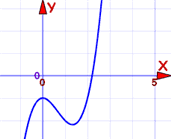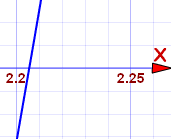Approximate Solutions
Sometimes it is difficult to solve an equation exactly, but an approximate answer may be good enough.
What is Good Enough?
Well, that depends what we are working on!
- If we are dealing with millions of dollars then we should try to get pretty close indeed. And that might need many significant digits
- If we are calculating how much food to buy for a party, then a small error won't matter so much. We could always buy a little extra to be sure
- Or something in between
So understanding what we are working on helps us know how accurate we should be.
Example: Cooking
For general cooking we can change things a bit and get away with it. Adding an extra 50g of carrot is fine. Just not too much salt, please!

Example: Baking
When baking a cake, small changes in ingredients are often fine, a little extra cocoa or slightly less sugar is OK, but if we go too far the result may be a failure.
Adding 100ml extra milk will make the result wet and yucky.
Example: Aerospace Engineering
Calculations for the trajectory and fuel needs of spacecraft require extreme accuracy. Small errors can lead to going off-course and mission failure.
Solving Equations
We still want to be as accurate as possible, so try to handle any approximate data sensibly.
When solving equations:
- first get it in the form x = something
- then do any calculations
Like this:
Example: Solve x/7 − 6.3068 + 2π = 0 (to 3 decimal places)
Why wait until the end to do the calculations? Well, every time we do a calculation we can introduce an error. If we do this several times our errors can accumulate to be large.
Checking
If our answer is approximate, then our checking will also be approximate.
Example: Check that x = 0.165 solves x/7 − 6.3068 + 2π = 0
Not quite right, but very close.
Graphical Estimation
We can make good approximations using graphs, particularly by using a zoom function, like on the Function Grapher.
Here is an example:
Example: estimate the solution to x3 − 2x2 − 1 = 0 (to 2 decimal places).
Solution: Plot it!
Here is my first attempt. I can see it crosses through y=0 at about x=2.2

Let us zoom in there to see if we can see the crossing point better:

It crosses between 2.20 and 2.21 ... slightly closer to 2.21. We are asked for 2 decimal places, so our answer is:
x3 − 2x2 − 1 = 0 at about x = 2.21
Check: (2.21)3 − 2(2.21)2 + 2 = approx 0.025, close to y=0